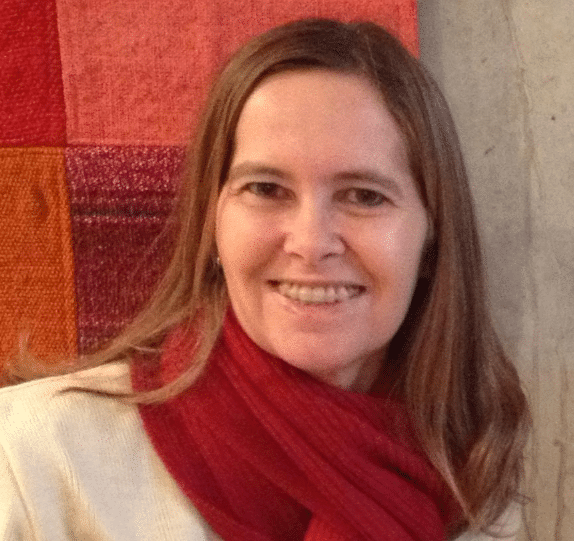My journey through the Linguistic Landscape
Photo by Higor Cavalcante | CC BY 2.0
No matter where you are in the world today, English is everywhere you look. It’s used in shop signs, products in the supermarket, the names of buildings, menus, graffiti, airports, public transport, shopping centres, notices, advertising posters and hoardings. In fact, here in Brazil there is even an English name for this type of advertising – ‘outdoor’ (as well as ‘busdoor’ for adverts on the back of buses, and ‘indoor’ for adverts in stations, shopping centres, etc.).
I first became interested in Linguistic Landscapes a few years ago, and since then it’s become a bit of an obsession. Just ask my wife, who often finds herself alone in the street as I’ve stopped 100m back to take a photo of a shop sign. The sigh and rolling of the eyes when I notice something ‘interesting’ has become all too common. I’ve given talks on the subject at conferences in Brazil, and a more lighthearted Pecha Kucha presentation at IATEFL last year. But perhaps most interestingly (for me, anyway), last year I teamed up with Stephen Greene to create the Map of the Urban Linguistic Landscape (MULL) – a Facebook group whereby we invite people from round the world to take photos of interesting language use and post them. We then transfer the best to our Flickr page and map. We had no idea it would become so popular, and we now have nearly 2,000 members, with people joining daily. This year we’ve set up a dedicated website and we’ve also got a resource book of activities in the pipeline.
So what exactly are Linguistic Landscapes? What follows is some of the background theory and a few practical classroom ideas, with some further reading suggestions at the bottom.
Towards a definition
The study of the linguistic landscape is a relatively new area, which draws from several academic disciplines such as applied linguistics, sociolinguistics, anthropology, sociology, psychology and cultural geography (Ben-Rafael, Shohamy and Barni, 2010). The term Linguistic Landscape was first used by Landry and Bourhis in a paper published in 1997, when they defined it thus;
The language of public road signs, advertising billboards, street names, place names, commercial shop signs, and public signs on government buildings combine to form the linguistic landscape of a given territory, region or urban agglomeration.
Landry and Bourhis, 1997
Shohamy and Gorter have since widened the scope of the definition to include:
…language in the environment, words and images displayed and exposed in public spaces, that is the center of attention in this rapidly growing area referred to as Linguistic Landscape (LL).
(Shohamy and Gorter, 2008)
In another study, Dagenais, Moore, Sabatier, Lamarre and Armand (2008) introduce the idea of the Linguistic Landscape as ‘environmental print’, i.e. cities as ‘texts’.
Features of the linguistic landscape
Most studies of the Linguistic Landscape are socio-economic in nature, i.e. they seek to find correlations between the use of certain languages (such as English) in parts of a city and compare them to the general standard of living in those areas. There is general agreement that language use in the linguistic landscape falls into one of two categories, top-down (public signs, created by the state and local government bodies) and bottom-up language use (created by shop owners, private businesses, etc.), as is summarised in the table below:
Ben-Rafael, Shohamy, Amara and Trumper-Hecht, 2006
However, I prefer to think of it more as a cline, with varying degrees of how ‘official’ and ‘unofficial’ the language use is, as below:
This allows us to include things which are more complex to define, such a T-shirts, which are designed and manufactured by a company, but in which the individual expresses a personal choice by wearing.
How can we exploit the Linguistic Landscape as a learning resource?
While the study of the linguistic landscape is emerging in various domains of enquiry … it has heretofore not drawn much attention in the field of education.
Dagenais, Moore, Sabatier, Lamarre and Armand, 2009
They go on to describe a study they did in Canada, where they gave disposal cameras to children at school and got them to go out and photograph the English they saw in the urban environment. The learners were therefore acting as ‘language researchers’ and collated information in class.
There are various other ways to exploit the linguistic landscape in class:
- Guess the place. Students are shown the names of shops (which could be in the local area), and in teams have to guess what type of shop or business it is.
- Talking about graffiti. Show students photos of different examples of graffiti in the local area, students discuss which they like/don’t like and why. Some graffiti also carries a political message (e.g. Banksy), which could be used to stimulate discussion.
- The history of streets. Many building and street names are often named after historical figures. Learners could research these online and present their findings to the class.
- New urban spaces. Take a photo of an ‘empty’ urban area in your neighbourhood e.g. a patch of grass, under a bridge, a blank wall on the side of a building, etc. Students work in groups to design how to ‘decorate’ it and present their ideas to the class.
How would you improve this?
- Correct the errors. Often the use of English in the linguistic landscape contains errors (even in countries where English is the main language). Collect these and bring them to class for learners to correct.
- Improve the adverts. Collect photos of advertising posters/hoardings. Give them to learners to modify however they want to, and try to ‘improve them’ by changing words, adding comments etc. e.g. an advert for a business directory which reads ‘Whatever you want, just yell!’ – underneath you could write ‘less adverts’.
- Create an open space. A while ago I was in Prague, when I came across this on a wall in a park:
A popular topic in Prague, apparently.
… the idea being that people could walk up and write their own ideas to finish the sentence. You could create a space like this in your class, on which students finish sentences on large pieces of paper on the walls. This could be to practice a grammar point or lexical pattern.
Why is the linguistic landscape important?
LL, indeed, constitutes the very scene – made of streets, corners, circuses, parks, buildings – where society’s public life takes place. As such, this scene carries crucial sociosymbolic importance as it actually identifies – and thus serves as the emblem of societies, communities and regions.
Ben-Rafael, Shohamy, Amara and Trumper-Hecht, 2006
The linguistic landscape is important not only because it provides the backdrop to our day-to-day lives, but also as a valuable language learning resource. And the best thing about it is that it’s everywhere, open to everyone and free.
*If you’re at IATEFL Manchester next month, I’ll be giving a talk on Linguistic Landscapes on Saturday 11th April at 17:10 in room Central 6.
Further reading
Backhaus, P (Ed) Linguistic Landscapes: A Comparative Study of Urban Multilingualism in Tokyo
Gorter, D (Ed) Linguistic Landscape: A New Approach to Multilingualism Multilingual Matters 2006
Landry, R and Bourhis, RY Linguistic landscape and ethnolinguistic vitality Journal of Language and Social Psychology 16 (1), 23-49
Shohamy, E, Ben-Rafael, E and Barni, M (eds) Linguistic Landscape in the City Multilingual Matters 2010
Shohamy, E and Gorter, D (eds) Linguistic Landscape: Expanding the Scenery Routledge, 2009









